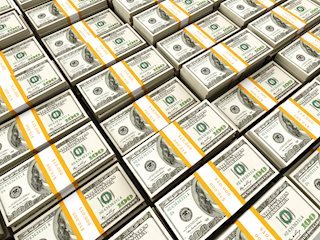US Dollar awaiting direction in Presidential election and FOMC meeting
|
- US Dollar declines after increased probability of VP Kamala Harris winning the Pennsylvania vote.
- NFP in the US rose by 12,000 in October on Friday, starkly missing expectations.
- Markets fully price in a 25 bps cut at Friday’s FOMC decision and 85% chance of another cut in December.
The US Dollar (DXY), which measures the value of the USD against a basket of six currencies, fell to a fresh nine-day low on Monday after polls showed Vice President Kamala Harris taking the lead in the US presidential election. The drop marks a reversal of the USD's recent strength, which had been driven by expectations of a Donald Trump victory and strong economic data.
The US Dollar has faced temporary setbacks due to profit-taking but has rebounded, consolidating near 104.00. The upcoming Federal Reserve (Fed) decision on Friday, as well as the outcome of the US election, is expected to influence the DXY's direction, with markets pricing in a 25-basis-point rate cut.
Daily digest market movers: US Dollar declines amidst presidential election volatility, markets digest NFP
- The disappointing Nonfarm Payrolls report of 12,000 net new jobs in October despite a consensus estimate of 113,000 triggered a decline in the US Dollar.
- The Unemployment Rate remained unchanged at 4.1%, while the Labor Force Participation Rate inched down to 62.6%.
- The Average Hourly Earnings increased to 4% YoY from 3.9%, suggesting continued wage inflation.
- The robust Services PMI, which rose to 54.9 from 51.5, contradicted the weak NFP data.
- Markets expect a 25 bps cut from the Fed next week and another 25 bps cut in December.
- No Fed speakers are scheduled this week due to the media blackout before the FOMC meeting.
- Bets on a Donald Trump victory in the presidential election, expected to lead to inflationary policies, also supported the US Dollar in the last several sessions, but weekend polls showing rising odds in favor of Kamala Harris have triggered a decline.
DXY technical outlook: DXY consolidates under 104.00 bearish momentum seen
The DXY index continues consolidating around the 103.70 level. The Relative Strength Index (RSI) points downward, escaping overbought territory, while the Moving Average Convergence Divergence (MACD) prints lower green bars.
Key support levels to watch are 103.50, 103.30 and 103.00, while resistance levels are 104.00, 104.50, and 105.00.
Fed FAQs
Monetary policy in the US is shaped by the Federal Reserve (Fed). The Fed has two mandates: to achieve price stability and foster full employment. Its primary tool to achieve these goals is by adjusting interest rates. When prices are rising too quickly and inflation is above the Fed’s 2% target, it raises interest rates, increasing borrowing costs throughout the economy. This results in a stronger US Dollar (USD) as it makes the US a more attractive place for international investors to park their money. When inflation falls below 2% or the Unemployment Rate is too high, the Fed may lower interest rates to encourage borrowing, which weighs on the Greenback.
The Federal Reserve (Fed) holds eight policy meetings a year, where the Federal Open Market Committee (FOMC) assesses economic conditions and makes monetary policy decisions. The FOMC is attended by twelve Fed officials – the seven members of the Board of Governors, the president of the Federal Reserve Bank of New York, and four of the remaining eleven regional Reserve Bank presidents, who serve one-year terms on a rotating basis.
In extreme situations, the Federal Reserve may resort to a policy named Quantitative Easing (QE). QE is the process by which the Fed substantially increases the flow of credit in a stuck financial system. It is a non-standard policy measure used during crises or when inflation is extremely low. It was the Fed’s weapon of choice during the Great Financial Crisis in 2008. It involves the Fed printing more Dollars and using them to buy high grade bonds from financial institutions. QE usually weakens the US Dollar.
Quantitative tightening (QT) is the reverse process of QE, whereby the Federal Reserve stops buying bonds from financial institutions and does not reinvest the principal from the bonds it holds maturing, to purchase new bonds. It is usually positive for the value of the US Dollar.
Information on these pages contains forward-looking statements that involve risks and uncertainties. Markets and instruments profiled on this page are for informational purposes only and should not in any way come across as a recommendation to buy or sell in these assets. You should do your own thorough research before making any investment decisions. FXStreet does not in any way guarantee that this information is free from mistakes, errors, or material misstatements. It also does not guarantee that this information is of a timely nature. Investing in Open Markets involves a great deal of risk, including the loss of all or a portion of your investment, as well as emotional distress. All risks, losses and costs associated with investing, including total loss of principal, are your responsibility. The views and opinions expressed in this article are those of the authors and do not necessarily reflect the official policy or position of FXStreet nor its advertisers.